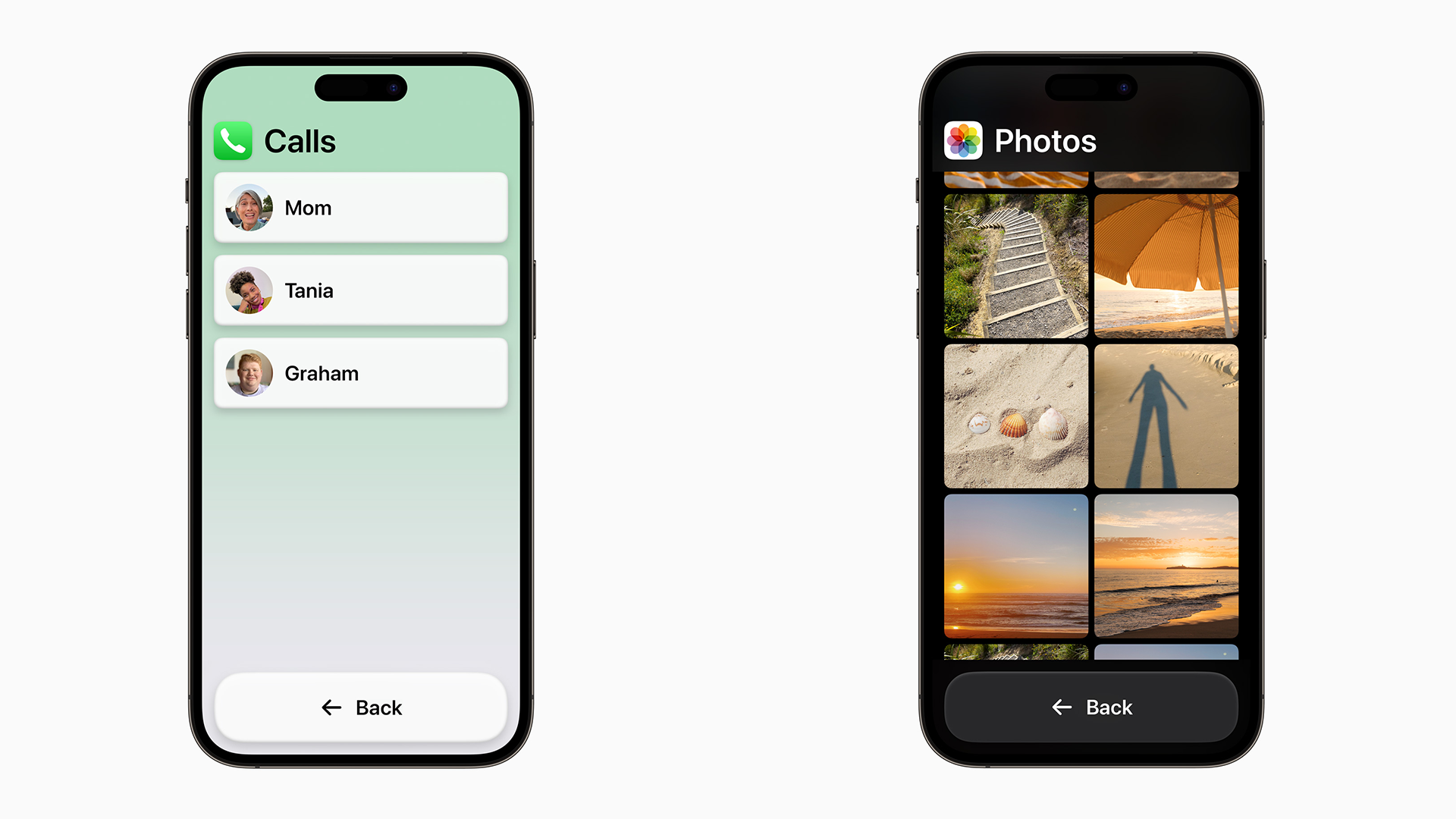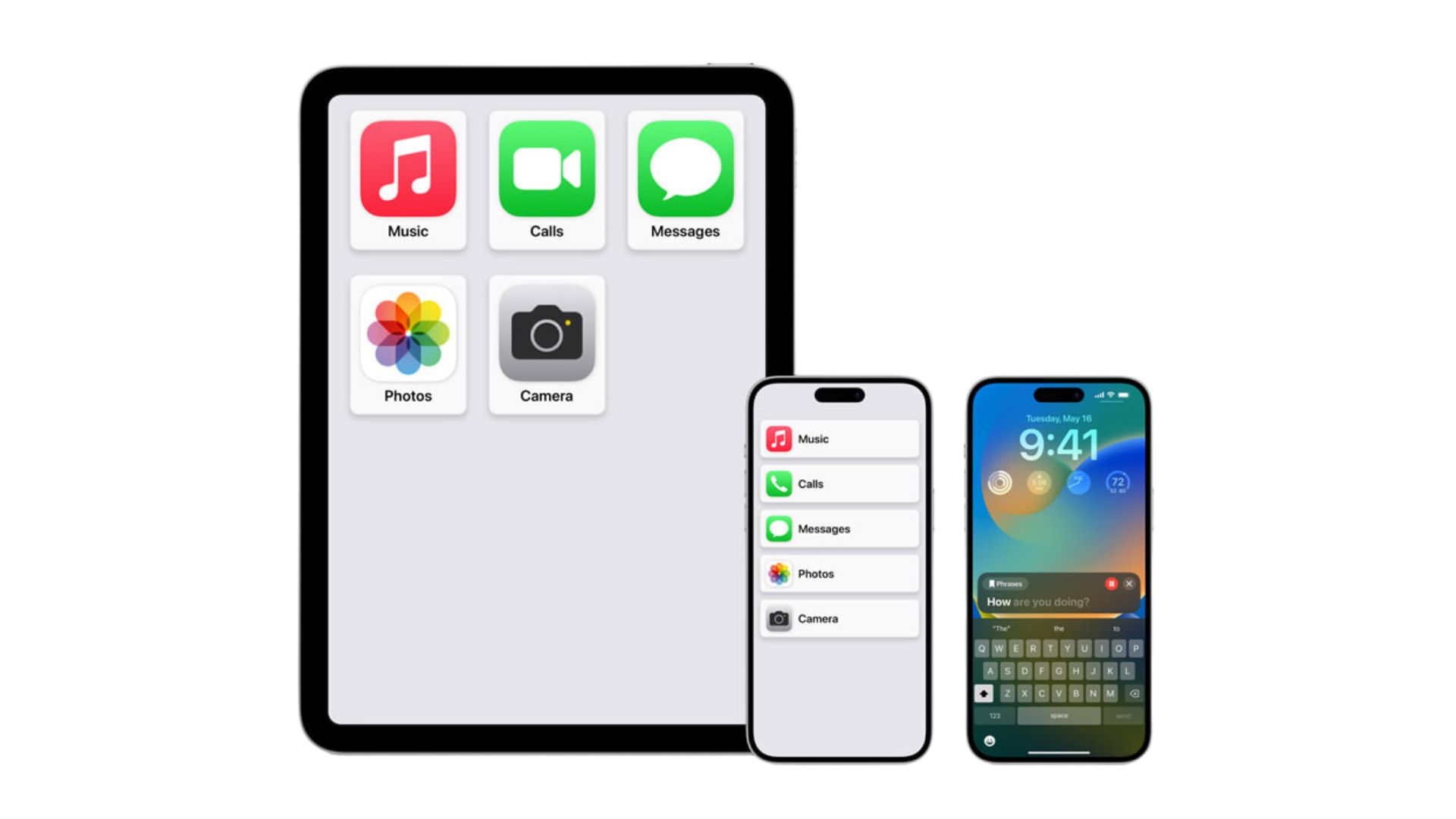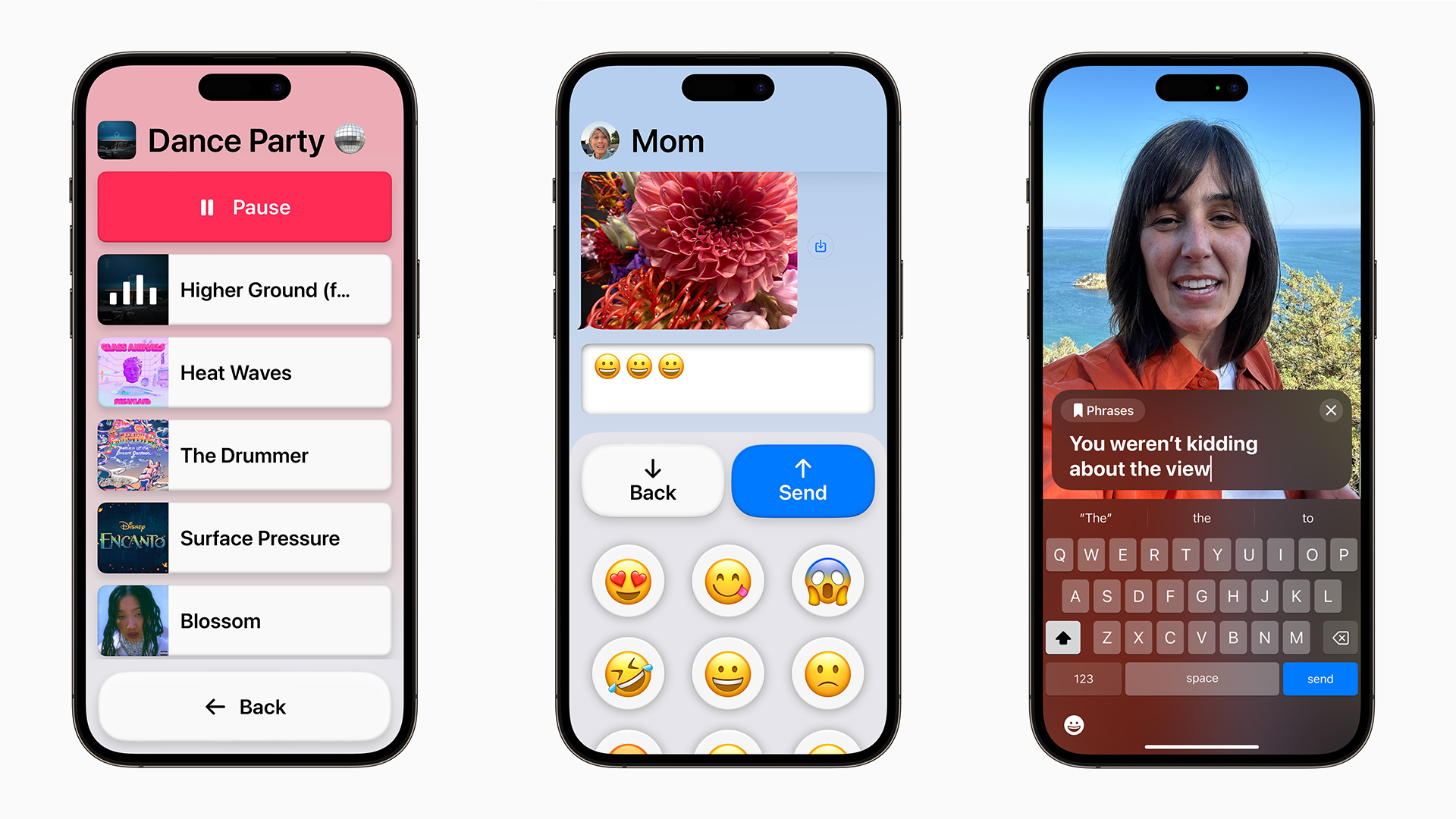New accessibility features for iOS 17 have just been given a big preview
Point and speak in Magnifier is just one new feature coming.

In a press release just launched by Apple, some big new accessibility features clearly designed for iPadOS 17 and iOS 17 have just been announced. Designed to make life and using Apple devices easier for everyone, the new accessibility features are coming later this year.
There are new features for those with cognitive disabilities, with assistive access, Live Speech, and Personal Voice Advance Speech Accessibility that lets users type out what they want to say, while Point and Speak mode in Magnifier gives point and speak to blind users, or those with low vision.
Not sure what all that means? We'll give you the details.
Assistive Access looks to be a game changer

The first of the new features clearly coming to iOS 17 and iPadOS 17 is Assistive Access, which concentrates or "distills" apps and experiences to "their essential features in order to lighten the cognitive load." They make some of the most popular features on iPad and iPhone, such as listening to music, connecting with loved ones, and enjoying photos, easier for more people to use.
It will feature a "customized experience for Phone as well as FaceTime, now combined into the calls app." There's a simple and distinct user interface with high-contrast buttons and larger text labels and more visual ways of using your device. There is now an Emoji only keyboard, for example.
You can add third-party apps to this too as a way of a 'shortcut'. So if you use YouTube quite a bit, you can easily add it to this grid. Calls also merges 'Phone' and 'FaceTime', which makes sense, so you can find a friend or family in your Contacts, and decide if you want to phone them by audio or video.
Live Speech and Personal Voice Advance Speech Accessibility "has been designed to support millions of people globally who are unable to speak or who have lost their speech over time." It will let users type in what they want to say, and then it will play it back with a personalized voice that the user has created. This comes from a short setup, which sees users "reading along with a randomized set of text prompts to record 15 minutes of audio on iPhone or iPad." This uses deep learning to create a voice that sounds like the reader.
Master your iPhone in minutes
iMore offers spot-on advice and guidance from our team of experts, with decades of Apple device experience to lean on. Learn more with iMore!
These will be available for iPhone 12 and above later in the year.

Detection Mode in Magnifier will tell people with Vision disabilities what something says, and what something is. For example, point it at a sign outside, and it will read you the sign. When you look at something like an oven or a microwave and point at some text, it will detect where you are pointing, and read out what the text says for you. It can be combined with more accessibility features in Magnifier, "such as People Detection, Door Detection, and Image Descriptions to help users navigate their physical environment."
As this uses the LiDAR scanner, found in the iPhone 12 Pro and above, this feature will be available to these iPhones, and iPad Pro models that have the scanner too.
While Apple hasn't directly said that these are for iOS 17 and iPadOS 17, the same occurred last year when it previewed new accessibility features before WWDC 2022.
These all make iOS and iPadOS more helpful to users than ever before, really along Apple's best iPhones and best iPads to become more than just smartphones and tablets, but also useful accessibility aids. Apple doesn't stay exactly when the new features are coming out, only confirming them for "later this year."

As iMore's Senior Staff writer, Tammy uses her background in audio and Masters in screenwriting to pen engaging product reviews and informative buying guides. The resident audiophile (or audio weirdo), she's got an eye for detail and a love of top-quality sound. Apple is her bread and butter, with attention on HomeKit and Apple iPhone and Mac hardware. You won't find her far away from a keyboard even outside of working at iMore – in her spare time, she spends her free time writing feature-length and TV screenplays. Also known to enjoy driving digital cars around virtual circuits, to varying degrees of success. Just don't ask her about AirPods Max - you probably won't like her answer.
